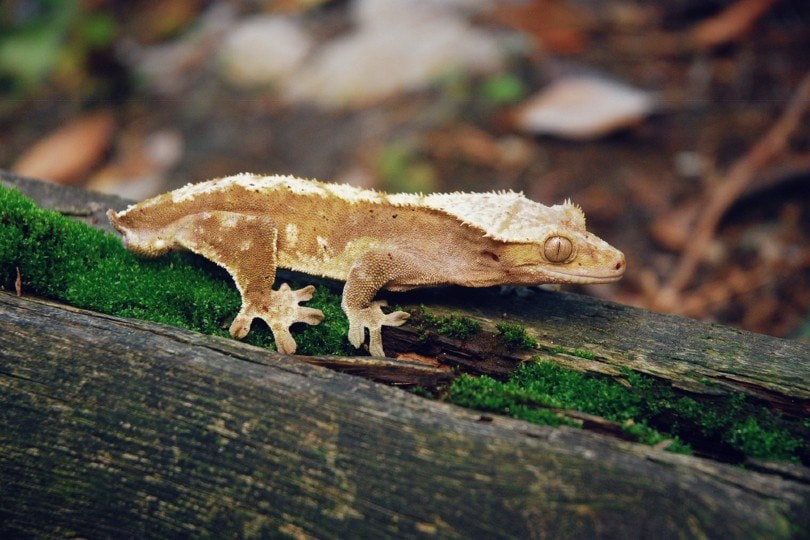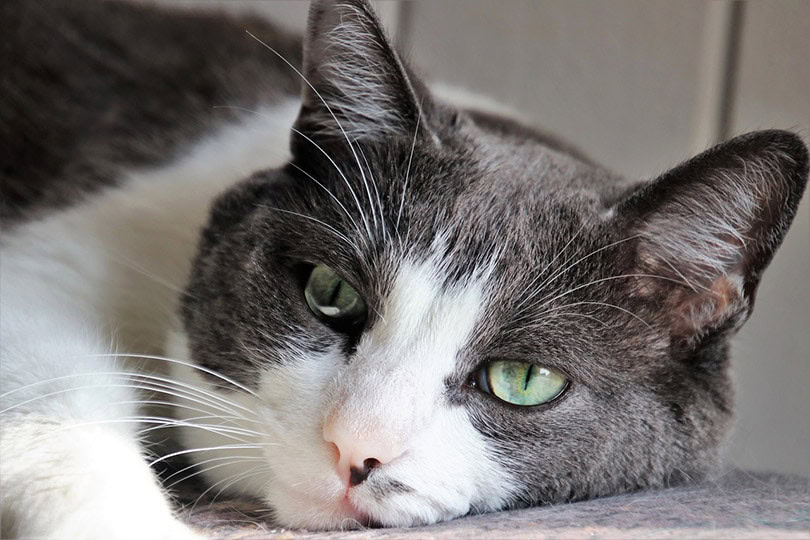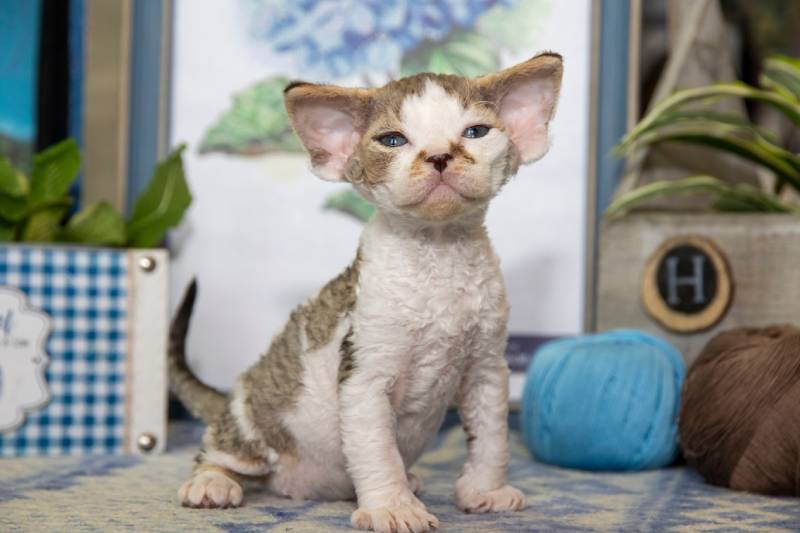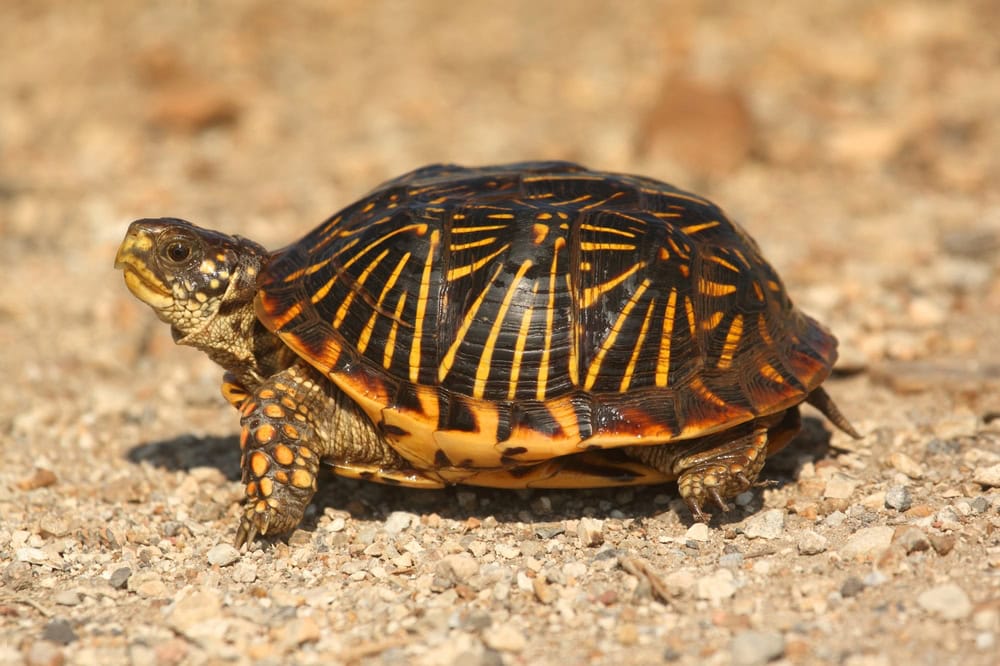VET APPROVED

The information is current and up-to-date in accordance with the latest veterinarian research.
Learn more »Click to Skip Ahead
Crested geckos are listed as a vulnerable species, thought to be extinct until 1994 when a new population of them was found living in New Caledonia. Export of these animals isn’t allowed anymore, but there are now large breeding operations in the United States and Europe, meaning crested geckos are becoming less rare and more sought after in the pet trade.
Crested geckos are highly prized for their laid-back personalities and comfort being handled by people, not to mention the wide range of color morphs that show up in the species. We’ve compiled this diet and growth information to help you know what to expect when you decide to bring a crested gecko into your home.

Facts About Crested Geckos
- Like many other lizards, crested geckos can drop their tails if they feel threatened. However, their tails will never grow back, leaving them with a nub tail.
- Crested geckos are nocturnal, so you will likely not see much of your new pet during the day.
- These lizards are known for their jumping abilities, so care should be taken when handling them to make sure they don’t escape or hurt themselves.
- If you notice your crested gecko licking their eyeballs, it’s because this is how they keep their eyes moistened!
- Crested Geckos require tall enclosures because they love to climb and jump (they are arboreal). Height is more important than the width or floor space in their enclosure.
- If you see your crested gecko eating their shed skin, don’t worry! This is totally normal.
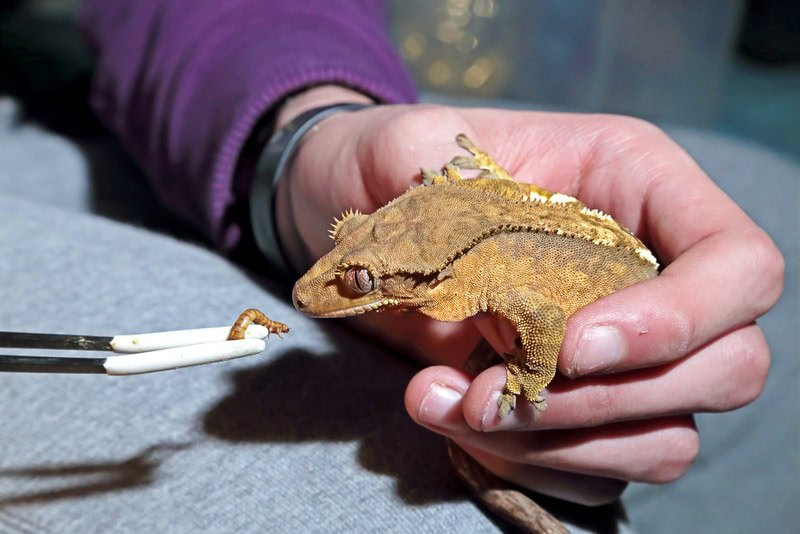
Crested Gecko Size and Growth Chart
| Age | Weight | Body Length with Tail |
| Hatchling | 1.5 – 2 grams | 2.5 – 3 inches |
| Baby (2 months) | 3 grams | 3 – 4 inches |
| Juvenile (3 months) | 4 grams | 3 – 5 inches |
| Juvenile (4 months) | 5 grams | 4 – 6 inches |
| Juvenile (5 months) | 7 grams | 4 – 6 inches |
| Juvenile (6 months) | 9 grams | 5 – 7 inches |
| Juvenile (9 months) | 16 – 35 grams | 6 – 9 inches |
| Juvenile transitioning to adult (12 months) | 35 – 50 grams | 9 – 16 inches |
| Adult (18-24+ months) | 35 – 55+ grams | 9 – 16+ inches |
The reason for a very high discrepancy in the growth rate of crested geckos as they approach adulthood can be attributed to several factors, which we will discuss later.
It is possible for two crested geckos of the same egg batch to have different growth rates and weights despite being housed in similar environments and an identical meal plan. As a general rule though, it’s very rare for a year-old crested gecko to be under 10–12 grams in weight; such a weight for a year-old individual (regardless of their sex) is a cause for concern.

When Do Crested Geckos Reach Their Full Size?
It takes between 12-24 months to become a fully grown crested gecko, although sometimes this can take up to 3 years. Crested geckos are considered to be fit for reproduction at around 35 grams, which usually happens around 12-18 months.
As we’ll shortly explain, factors such as diet, temperature, and humidity all have a direct impact on how quickly your crested gecko takes to reach its full size. They are all unique individuals, though, meaning they will develop at different rates and reach different full adult sizes.
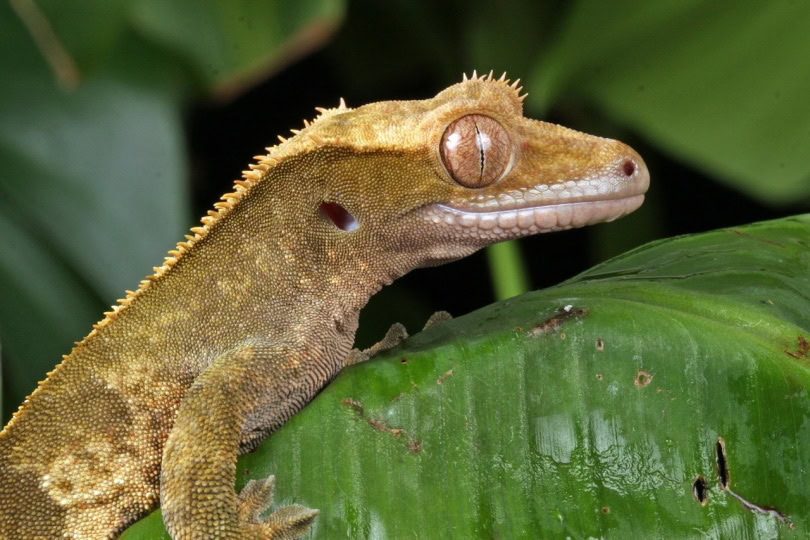
What Factors Affect Crested Gecko Growth?
- Temperature: Being cold-blooded, the growth rate and metabolism of crested geckos largely depend on their enclosure’s temperature.
- Genetics: It’s not a guarantee, but crested geckos from larger parents will likely be large in adulthood, while small parents may produce offspring that are smaller as adults.
- Medical History: Geckos that are unwell will often eat less, weigh less, and grow slower.
- Nutrition: Of course, nutrition plays a huge role in your pet’s overall growth, development, and health. Crested geckos on a sound nutrition plan fare better and grow better than those that aren’t on such a plan.
- Incubation Period: Geckos with an incubation period of 80-100 days tend to grow larger faster than those with shorter incubation periods.
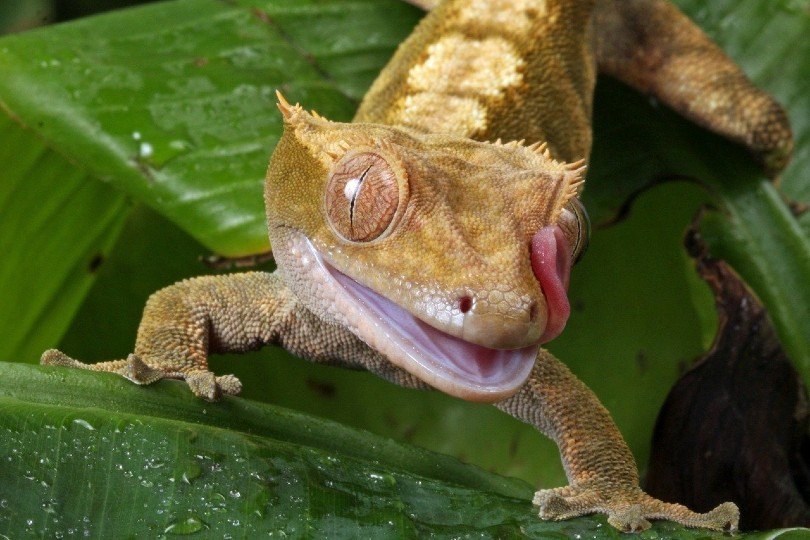
Why Is My Crested Gecko Not Growing?
- Nutritional Deficiencies: If your crested gecko isn’t receiving enough dietary calcium or protein, this can stunt growth significantly, as well as lead to health problems. Make sure you are balancing your gecko’s diet well for their life stage. Ask your exotic animal vet if you are unsure!
- Tail Dropping: The tail of an adult crested gecko is usually around 4-5 inches long. If your gecko becomes stressed and drops its tail, there will be a noticeable change in weight and overall size. Since the tail will not grow back, your gecko will likely stay smaller than most for the remainder of their life.
- Incorrect Temperature: Crested geckos are reptiles, so they are cold-blooded. This means they need environmental warmth for energy. If your gecko’s enclosure is too cold, they will not have the energy to eat and their body will not have the energy to perform all functions, so it will perform vital functions first, stunting growth.
- Inadequate Humidity: Crested geckos should receive a minimum of 50% humidity but keeping the enclosure with humidity levels up to 70-80% will prevent dehydration and keep your gecko comfortable. Dehydrated or stressed geckos will not grow well.
- Inadequate or Improper Nutrition: Contrary to popular belief, feeding these animals fruit every day can lead to nutritional deficiencies and poor eating habits. It’s best to consult an exotic veterinarian for a detailed nutritional plan for your pet. However, a good starting point is a high-quality commercial mix supplemented with gut-loaded and dusted insects.
- Bullying: If your male or female crested gecko is being bullied by cage-mates, they will become stressed and less interested in eating. This can also happen if your gecko is being harassed by other pets, like cats and dogs, or small children.
- Illness: If you are concerned about the slow rate of growth you’re seeing in your crested gecko and suspect an illness (or need a sound explanation as to why they’re not growing well), you should check with your veterinarian. They will be able to guide you and help you determine if there are underlying medical conditions causing slow or non-existent growth or weight gain.

Final Thoughts
When considering getting a Crested Gecko, it’s important to ask yourself if you have the space for it and an appropriately sized enclosure. Remember that Crested Geckos can live 10-20 years as pets, so they are a long-term space and time commitment.
Crested geckos make great pets, but it’s necessary to become fully educated on their care before you bring the new family member home! Tracking and plotting their growth every 2-4 weeks will help you keep a close eye on whether or not your gecko is developing into a healthy adult.
- You Might Also Like: Are Crested Geckos Nocturnal? Reptile Routine & Habits
Featured Image: Catherina Reynolds, Shutterstock
